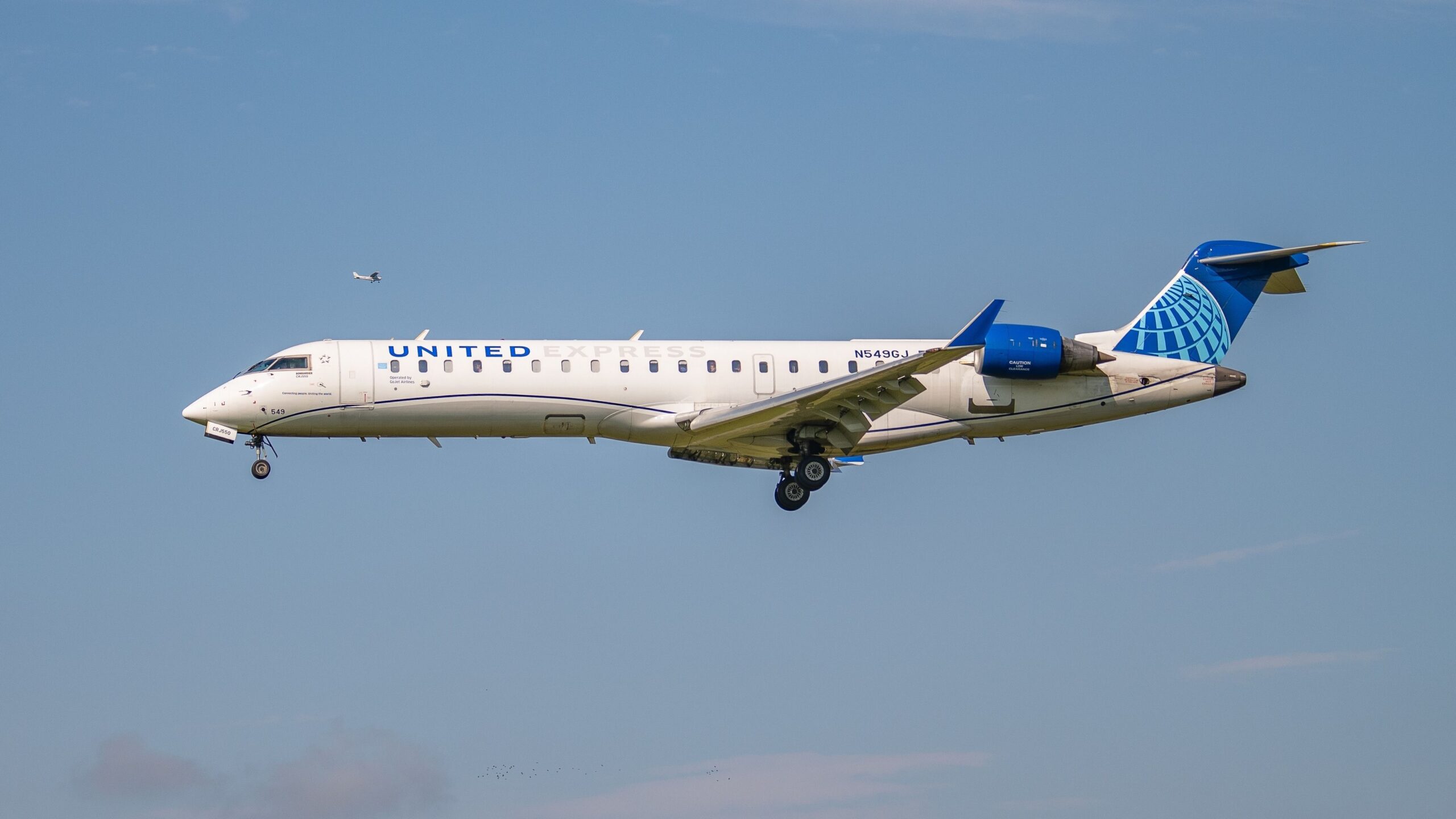The Federal Aviation Administration ( FAA
) has said that it was investigating a depressurization event involving a ![]() United Airlines
United Airlines
Mitsubishi (ex-Bombardier) CRJ550, which was forced to divert to Detroit.
Depressurization leading to a diversion
The FAA detailed that on January 12, the flight crew of a GoJet Airlines CRJ550
, registered as N545GJ, was forced to divert to Detroit Metropolitan Wayne County Airport
(DTW) because the aircraft experienced depressurization problems.
The aircraft that the regional carrier operated on behalf of United Express
was flying from Allentown Lehigh Valley International Airport (ABE) to Chicago O’Hare International Airport
(ORD).
Photo: EQRoy | Shutterstock
Flightradar24 records showed that while the CRJ550 departed the Pennsylvanian city and had successfully climbed to an altitude of 40,000 feet (12,192 meters), around an hour and fifteen minutes after departure, the regional jet quickly descended to 10,000 ft (3,048 m).
At 07:43 local time (UTC -5), the CRJ550 was still at 40,000 ft. However, it quickly descended to 10,000 ft, reaching that altitude in around seven minutes, and continued to descend to 6,000 ft (1,828 m), where it leveled off before its diversion to Detroit.
During the duration of the flight, it never squawked 7700, which would have indicated a general emergency onboard the jet. It landed safely in Detroit at 08:21 local time. The FAA said it will investigate the event.

Related
United Express Regional Carrier GoJet Airlines Plans To Nearly Double Operations In 2025
The airline plans to add several aircraft between now and the end of 2025.
Moved to St. Louis
Following its diversion to Detroit, GoJet Airlines moved the aircraft to St. Louis Lambert International Airport (STL) on January 12. During the flight to Missouri, the regional jet climbed to a maximum altitude of 34,000 ft (10,363 m).
At the time of publishing, the regional aircraft had a scheduled flight from St. Louis to Washington Dulles International Airport
(IAD) on flight UA4506, with a subsequent flight UA4424 from Washington to Ottawa Macdonald-Cartier International Airport (YOW).
GoJet Airlines outlined that St. Louis is the location of its headquarters, a crew base, and one of the four maintenance bases. The others are located at Chicago-O’Hare, Newark Liberty International Airport
(EWR), and Richmond International Airport (RIC).
Photo: Kevin Hackert | Shutterstock
Ch-aviation data showed that Bombardier, which still held the type certificate for the CRJ aircraft family at the time, delivered the aircraft to GoJet Airlines on April 27, 2006. The regional jet was initially registered as N163GJ as it was originally a CRJ700.
However, in August 2019, it was reconfigured to the CRJ550, decreasing capacity to 20 economy, 20 economy plus, and ten business class seats. According to ch-aviation, SkyWest Airlines owns the aircraft, which is powered by two GE Aerospace CF34 engines.
Aviation analytics company Cirium’s Diio Mi airline planning system data showed that in January, GoJet Airlines, which exclusively provides services to United Airlines and its regional brand, United Express, will only operate CRJ550 flights on behalf of the regional airline.
In total, GoJet Airlines planned 1,286 weekly departures in January, with Sunday being the busiest day when the capacity provider will operate an average of 189 flights.

Related
FAA Proposes Fluorescent Penetrant Inspections Of 2,988 GE Engines Installed On US Aircraft
The agency estimated that over the next 12 years, US airlines will have to spend $265 million to replace the affected part.
Dangers of depressurization
SKYbrary, a project initiated by EUROCONTROL with the help of the International Civil Aviation Organization (ICAO)
and other aviation stakeholders, identified depressurization as an event that can be classified as explosive, rapid, or gradual. This is based on the time interval over which cabin pressure is lost.
Considering that the pilots of the GoJet Airlines CRJ550 did not immediately descend to 10,000 ft and below – where the reduced levels of oxygen are considered to have little effect on aircrew and healthy passengers, per SKYbrary – it was most likely a gradual depressurization onboard the aircraft.
Above 10,000 ft, the reduced levels of oxygen become progressively more pronounced, and above 20,000 ft, it leads to a loss of intellectual ability followed by unconsciousness, SKYbrary’s explainer on the event read.
Infamously, this happened on Helios Airways flight ZU522, which crashed just north of its destination, Athens Airport (ATH), in August 2005.

Related
What Happens When An Aircraft Loses Cabin Pressurization?
How do pilots and passengers respond in the event of a depressurization?



